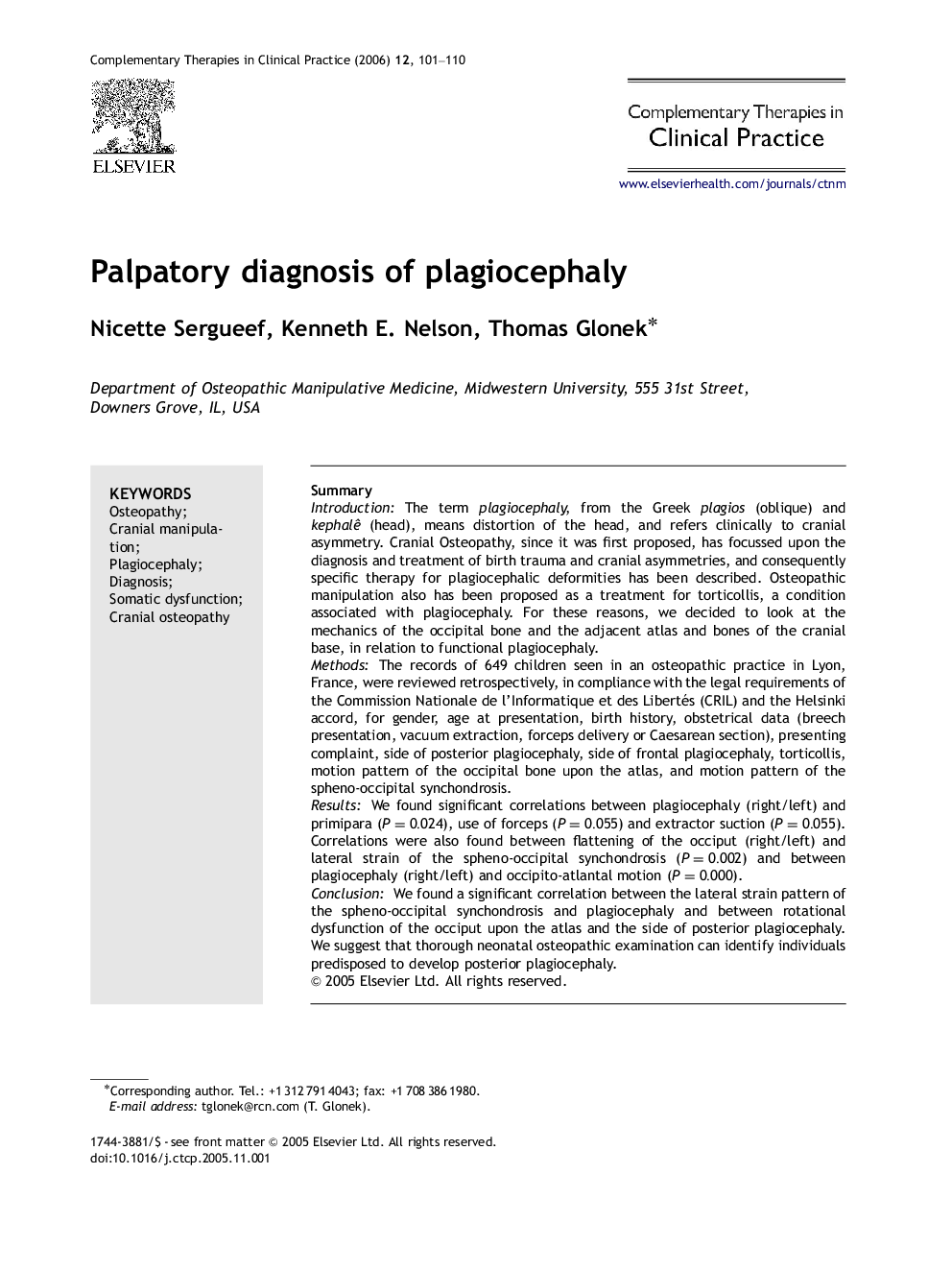| Article ID | Journal | Published Year | Pages | File Type |
|---|---|---|---|---|
| 2628787 | Complementary Therapies in Clinical Practice | 2006 | 10 Pages |
SummaryIntroductionThe term plagiocephaly, from the Greek plagios (oblique) and kephalê (head), means distortion of the head, and refers clinically to cranial asymmetry. Cranial Osteopathy, since it was first proposed, has focussed upon the diagnosis and treatment of birth trauma and cranial asymmetries, and consequently specific therapy for plagiocephalic deformities has been described. Osteopathic manipulation also has been proposed as a treatment for torticollis, a condition associated with plagiocephaly. For these reasons, we decided to look at the mechanics of the occipital bone and the adjacent atlas and bones of the cranial base, in relation to functional plagiocephaly.MethodsThe records of 649 children seen in an osteopathic practice in Lyon, France, were reviewed retrospectively, in compliance with the legal requirements of the Commission Nationale de l’Informatique et des Libertés (CRIL) and the Helsinki accord, for gender, age at presentation, birth history, obstetrical data (breech presentation, vacuum extraction, forceps delivery or Caesarean section), presenting complaint, side of posterior plagiocephaly, side of frontal plagiocephaly, torticollis, motion pattern of the occipital bone upon the atlas, and motion pattern of the spheno-occipital synchondrosis.ResultsWe found significant correlations between plagiocephaly (right/left) and primipara (P=0.024P=0.024), use of forceps (P=0.055P=0.055) and extractor suction (P=0.055P=0.055). Correlations were also found between flattening of the occiput (right/left) and lateral strain of the spheno-occipital synchondrosis (P=0.002P=0.002) and between plagiocephaly (right/left) and occipito-atlantal motion (P=0.000P=0.000).ConclusionWe found a significant correlation between the lateral strain pattern of the spheno-occipital synchondrosis and plagiocephaly and between rotational dysfunction of the occiput upon the atlas and the side of posterior plagiocephaly. We suggest that thorough neonatal osteopathic examination can identify individuals predisposed to develop posterior plagiocephaly.
